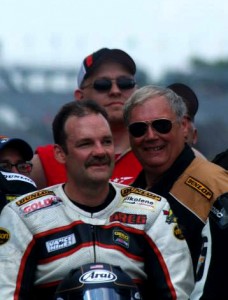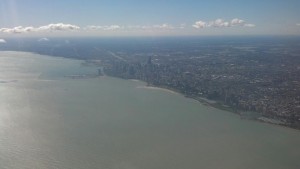The news of the second EBR shutdown has now completed its first round of the internet, and it seems a few people are shocked and a little bit angry. This is understandable human behavior, in many ways the loss of EBR can be felt like the loss of a friend and the cycle of grieving applies.
As much as denial and anger creep into our minds, we need to recognize it and put it into context before we can gain a perspective on the whole situation and begin to heal. I claim no insider knowledge of the situation, but as an experienced business person, a few things are eminently clear:
- There is no scam, lies, or intent to mislead on the part of Erik Buell or Erik Buell Racing (EBR) or Liquid Asset Partners (LAP)
- Market conditions for motorcycles are difficult at best and have not been conducive to the success of ANY manufacturer.
Any business endeavor needs to be singularly focused to succeed, EBR wore this on their sleeves figuratively and literally with the “Never Quit” slogan. When you live this as truth, you push, push, and push some more until either your goals are realized, or you crash and burn.
Win it or bin it.
You don’t foreshadow failure by sending out messages like “sales have not reached the potential of supply” or “we can’t get dealers to commit”. EBR did not signal failure because there was no intent to fail. New models where developed on a shoestring, and shows were attended because there was no quit until there was no other option.
Liquid Asset Partners (LAP) isn’t a villain here either, in fact, they probably did more than they should have. LAP is a family run company who helps companies and stakeholders recover value from the liquidation of assets. However, their love of motorcycling led them to depart from their normal and core business strategy to actually operate a company from liquidation. While the liquidation of excess inventory was certainly profitable, they also certainly shared in the operational losses that followed. It isn’t for any of us to say if those losses exceeded the profits, this is business, and the way you preserve jobs and livelihoods is by ultimately making money. As we all, grieve for the loss of employment for EBR employees, LAP has employees as well.
The implication that any party had less than honest intent here is frankly insulting to the individuals that poured their heart and soul into making it work and gave the endeavor a chance of success. If we really care about the employees of EBR or LAP, that line of thought is unproductive.
A for the market conditions, Motorcycles manufacturers are on slicks and racing in the rain. A talented rider can keep the bike upright, but acceleration, cornering or any sort of traction is really hard to come by and it’s ultimately noncompetitive. Teams have two options, go to the pits and change to rain tires, or retire from the race. EBR is a scrappy competitor with huge potential, but they didn’t have enough money left for an extra set of wheels or rain tires. By contrast, Polaris changed tires by shutting down Victory and redoubling on Indian, a brand that had deeper roots and more grooves in the tires.
I for one sincerely wish the Best for Erik Buell, Bill Melvin Sr. and Jr., as well as the employees of both EBR and Victory Motorcycles in their future endeavors, I am positive whatever those people do next, they will make motorcycling great again, or at least, better than it is today.

